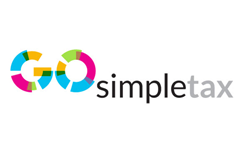
Hairdressers and barbers know when their clients need a trim. The same might not be said, however, of their own finances - especially when calculating their tax bill. If you're a self-employed hairdresser or barber and you want to protect your take-home pay, it's vital to be aware of the tax deductions available when filing your tax return
So, what can hairdressers claim on tax? Here's a quick but comprehensive analysis of what's allowable on your self-assessment tax return:
Claiming for the cost of chair hire
Many self-employed hairdressers shy away from the responsibilities of a full-time salon, yet want the security of a physical HQ they can operate within. To solve this problem, you can hire a chair.
HMRC looks kindly on expense claims for renting a chair on a hair/beauty premises. Complications could arise when you enter an agreement demanding a set percentage of your income each month; that's when accurate record-keeping becomes essential.
 New tax year, new you!
New tax year, new you!
You can file your Self Assessment for the tax year 2023/24 any time from 6 April 2024, don’t leave it until 31 January!
For self-employed individuals, sole traders, or those with non-PAYE income, GoSimpleTax provides direct Self Assessment filing with HMRC, offering helpful hints and savings tips throughout the process. Let GoSimpleTax handle all calculations.
Training fees and expenses
A hairdresser must keep their finger on the pulse of the profession, learning new techniques such as colouring, cuts and textural finishes. Save the receipts you accrue for training courses, as well as the overnight accommodation and travel costs that go with them – they are an investment that directly affects your earning potential.
Industry registration fees
Are you a member of a hairdressing association? What about the costs of keeping up with trade insights with magazine subscriptions, peer-to-peer reports or at exhibitions? HMRC will deduct these resources from your tax bill, providing they have been legitimised in some capacity. It may be a one-off payment, or an ongoing fee you deem essential to your work.
Claiming for the cost of equipment and uniform
The hairdresser's kit can be extensive – scissors, straighteners, curling tongs, razors, clippers, gel, hairspray and any number of other specialised tools. This also encompasses repairs for, say, a clipper that’s become blunt over time, unable to fulfil the function it used to have.
Lastly, any uniform you wear – either as a solo practitioner or the head of a workforce – can also be claimed for as an allowable expense, as long as it's consistent and only used for the job.
Marketing costs
It's foolhardy to launch a business without a promotional strategy. Self-employed hairdresser tax deductions therefore extend to any marketing costs, from investing in a website and social media, to physical branding (such as flyers, vehicle designs and professional stationery) that’s added to your marketing efforts. Paid-for ads also fall into this bracket, such as those you might use for a local Google AdWords campaign.
Written by Mike Parkes, technical director, GoSimple Software.


